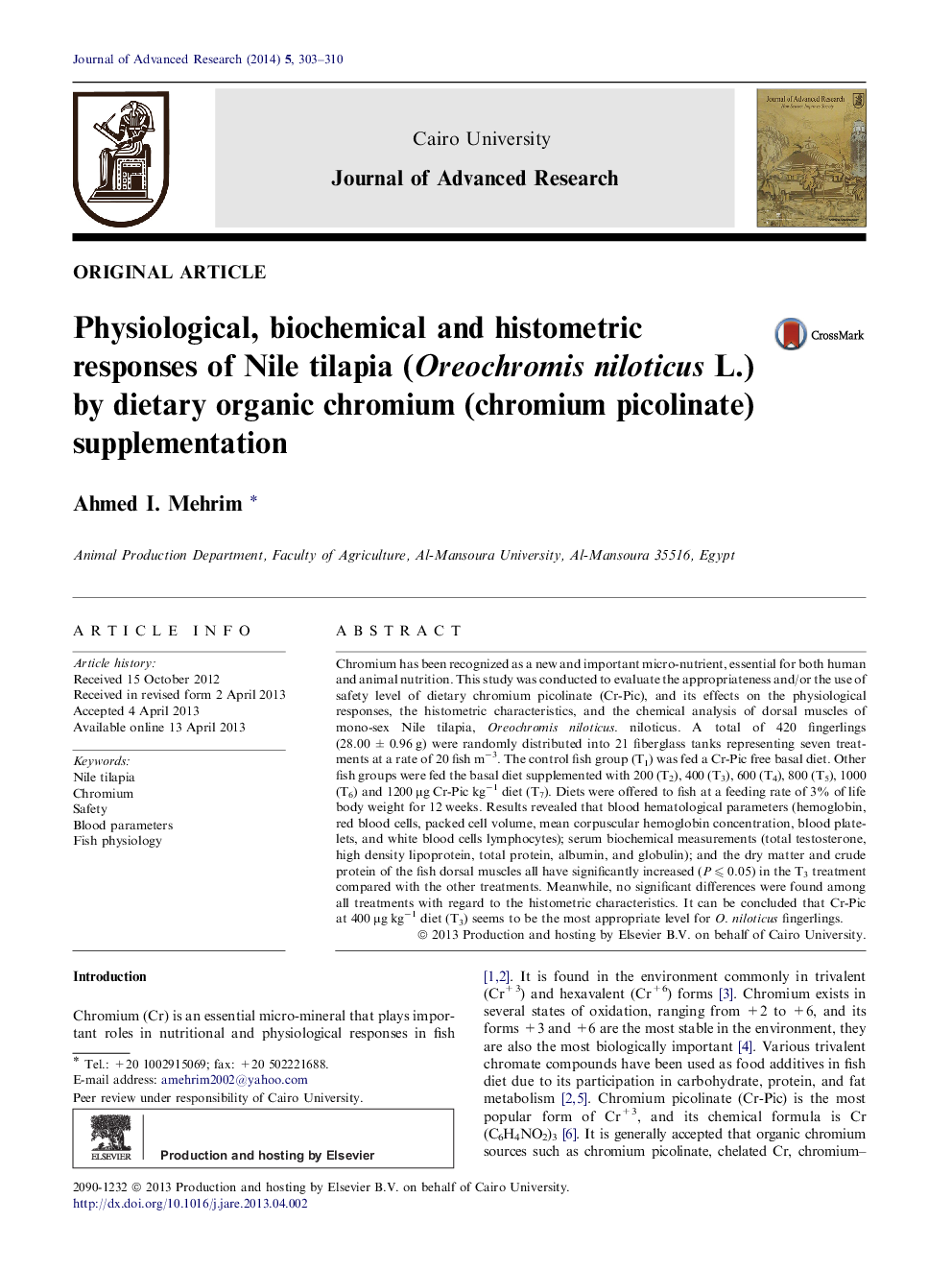| کد مقاله | کد نشریه | سال انتشار | مقاله انگلیسی | نسخه تمام متن |
|---|---|---|---|---|
| 826333 | 907919 | 2014 | 8 صفحه PDF | دانلود رایگان |

Chromium has been recognized as a new and important micro-nutrient, essential for both human and animal nutrition. This study was conducted to evaluate the appropriateness and/or the use of safety level of dietary chromium picolinate (Cr-Pic), and its effects on the physiological responses, the histometric characteristics, and the chemical analysis of dorsal muscles of mono-sex Nile tilapia, Oreochromis niloticus. A total of 420 fingerlings (28.00 ± 0.96 g) were randomly distributed into 21 fiberglass tanks representing seven treatments at a rate of 20 fish m−3. The control fish group (T1) was fed a Cr-Pic free basal diet. Other fish groups were fed the basal diet supplemented with 200 (T2), 400 (T3), 600 (T4), 800 (T5), 1000 (T6) and 1200 μg Cr-Pic kg−1 diet (T7). Diets were offered to fish at a feeding rate of 3% of life body weight for 12 weeks. Results revealed that blood hematological parameters (hemoglobin, red blood cells, packed cell volume, mean corpuscular hemoglobin concentration, blood platelets, and white blood cells lymphocytes); serum biochemical measurements (total testosterone, high density lipoprotein, total protein, albumin, and globulin); and the dry matter and crude protein of the fish dorsal muscles all have significantly increased (P ⩽ 0.05) in the T3 treatment compared with the other treatments. Meanwhile, no significant differences were found among all treatments with regard to the histometric characteristics. It can be concluded that Cr-Pic at 400 μg kg−1 diet (T3) seems to be the most appropriate level for O. niloticus fingerlings.
Journal: Journal of Advanced Research - Volume 5, Issue 3, May 2014, Pages 303–310